Habitat zones of the Galapagos Islands
Once a land of bare volcanic rock, the Galapagos Islands are now home to approximately 9,000 plant and animal species. This stunning variety of life is largely due to the wide range of habitat zones that can be seen as you walk across the islands and their varying altitudes. Galapagos habitats are divided into five distinct zones: marine, shore, arid, transition and humid zones.
Marine zone
The marine zone consists of the Galapagos Marine Reserve, which is the second largest marine reserve in the world. The breath-taking beauty and diversity held within these 51,000 square miles (132,000 square kilometres) of protected ocean have granted the waters a UNESCO World Heritage Site status. These majestic blues easily produce a sense of wonder for those lucky enough to experience them.
 The rich waters, fed by three major ocean currents, attract life from all over the Pacific. They are home to the world’s largest concentration of sharks and some of the most unique migrating marine life throughout the entire planet, including a large number of pregnant whale sharks. From sea turtles and marine iguanas to whales, sharks and manta rays, the Galapagos Marine Reserve makes up one of the most significant marine ecosystems on the planet.
Shore zone
Some of the most outstanding adaptations can be seen in the plant and animal life that have found a way to survive in the archipelago’s salt-ridden shore zone. Marine Iguanas and Galapagos Penguins are an example of a few Galapagos species that have developed stunning adaptations in this salty ecosystem, as have several species of mangrove, with some of these filtering up to 97% of the salt from the water where they grow.
The rich waters, fed by three major ocean currents, attract life from all over the Pacific. They are home to the world’s largest concentration of sharks and some of the most unique migrating marine life throughout the entire planet, including a large number of pregnant whale sharks. From sea turtles and marine iguanas to whales, sharks and manta rays, the Galapagos Marine Reserve makes up one of the most significant marine ecosystems on the planet.
Shore zone
Some of the most outstanding adaptations can be seen in the plant and animal life that have found a way to survive in the archipelago’s salt-ridden shore zone. Marine Iguanas and Galapagos Penguins are an example of a few Galapagos species that have developed stunning adaptations in this salty ecosystem, as have several species of mangrove, with some of these filtering up to 97% of the salt from the water where they grow.
 The briny lagoons, such as those found along the shores of Santa Cruz and Rabida islands also host further marvels for visitors, attracting a wide range of marine birds such as the Galapagos Flamingo. Tourists are treated to a range of pristine beaches, from floury white sand to rocky, brown beaches lined by picturesque cliffs.
Arid zone
The most prevalent habitat zone in the archipelago is the arid zone, which is found on all of the main islands and is also home to some of the most famous Galapagos creatures, including Darwin Finches and land iguanas. Cacti, shrubs and deciduous trees dominate this ecosystem, among which Darwin finches may be found pecking around the ground while saddleback tortoises ramble over the rocky soil. Palo Santo, burned for its unique smell, is one of the more well-known plants that grows this zone.
The briny lagoons, such as those found along the shores of Santa Cruz and Rabida islands also host further marvels for visitors, attracting a wide range of marine birds such as the Galapagos Flamingo. Tourists are treated to a range of pristine beaches, from floury white sand to rocky, brown beaches lined by picturesque cliffs.
Arid zone
The most prevalent habitat zone in the archipelago is the arid zone, which is found on all of the main islands and is also home to some of the most famous Galapagos creatures, including Darwin Finches and land iguanas. Cacti, shrubs and deciduous trees dominate this ecosystem, among which Darwin finches may be found pecking around the ground while saddleback tortoises ramble over the rocky soil. Palo Santo, burned for its unique smell, is one of the more well-known plants that grows this zone.
 Life here must learn to survive with very little fresh water, so a lot of it has developed splendid adaptations to counteract this scarcity. The Palo Verde plant is actually able to shut off its metabolic system to more efficiently conserve water and energy during dry bouts. Visitors are further attracted to this area due to the large number of land birds and, particularly during nesting season, many marine birds such as blue-footed boobies and storm petrels that use this zone as a nesting site.
Transition zone
Moving to a slightly higher altitude between the arid zone and humid zone lies another unique ecosystem: the transition zone. This zone is home to various trees and shrubs from the arid zone, as well as lichens, perennial herbs and other plants that grow in the humid zone. The soil found in this habitat zone is slightly deeper than that found in the arid zone, and annual rainfall is also higher here, making it a hospitable place for a wider range of plant species.
Life here must learn to survive with very little fresh water, so a lot of it has developed splendid adaptations to counteract this scarcity. The Palo Verde plant is actually able to shut off its metabolic system to more efficiently conserve water and energy during dry bouts. Visitors are further attracted to this area due to the large number of land birds and, particularly during nesting season, many marine birds such as blue-footed boobies and storm petrels that use this zone as a nesting site.
Transition zone
Moving to a slightly higher altitude between the arid zone and humid zone lies another unique ecosystem: the transition zone. This zone is home to various trees and shrubs from the arid zone, as well as lichens, perennial herbs and other plants that grow in the humid zone. The soil found in this habitat zone is slightly deeper than that found in the arid zone, and annual rainfall is also higher here, making it a hospitable place for a wider range of plant species.
 In fact, most agricultural activities occur in this zone, and the largest number of land birds are also found here. However, this zone is best known for being the popular hangout for the Galapagos giant tortoises, which have made this place their home.
Humid zone
The highest areas of the islands, reaching more than 300 feet (91 metres) above sea level, rise high enough to break the cloud cover, forcing moisture downwards to feed a rich, green ecosystem known as the humid zone. This is the wettest, highest and rarest zone in the Galapagos Islands, appearing only on a select few islands, including San Cristobal and Santa Cruz.
In fact, most agricultural activities occur in this zone, and the largest number of land birds are also found here. However, this zone is best known for being the popular hangout for the Galapagos giant tortoises, which have made this place their home.
Humid zone
The highest areas of the islands, reaching more than 300 feet (91 metres) above sea level, rise high enough to break the cloud cover, forcing moisture downwards to feed a rich, green ecosystem known as the humid zone. This is the wettest, highest and rarest zone in the Galapagos Islands, appearing only on a select few islands, including San Cristobal and Santa Cruz.
 This zone varies greatly in altitude, starting at 300 feet (91 metres) above sea level and extending all the way to 900+ feet (270+ metres). As the islands creep slowly upwards, their vegetation also changes, dividing the zone into a series of three “mini” habitat zones: Scalesia, Miconia and Pampa. Tourists are often amazed by the stunning variety of orchids, Scalesia forests and ferns found in this zone, with the latter plants growing up to 9 feet (nearly 3 metres) in height!
Adrián Peñafiel is Corporate Commercial Officer at Metropolitan Touring. Metropolitan Touring shares the wonders of South America with the world’s explorers through memorable experiences in unique cultures and natural environments.
If you would like to be a guest blogger on A Luxury Travel Blog in order to raise your profile, please contact us.
This zone varies greatly in altitude, starting at 300 feet (91 metres) above sea level and extending all the way to 900+ feet (270+ metres). As the islands creep slowly upwards, their vegetation also changes, dividing the zone into a series of three “mini” habitat zones: Scalesia, Miconia and Pampa. Tourists are often amazed by the stunning variety of orchids, Scalesia forests and ferns found in this zone, with the latter plants growing up to 9 feet (nearly 3 metres) in height!
Adrián Peñafiel is Corporate Commercial Officer at Metropolitan Touring. Metropolitan Touring shares the wonders of South America with the world’s explorers through memorable experiences in unique cultures and natural environments.
If you would like to be a guest blogger on A Luxury Travel Blog in order to raise your profile, please contact us.
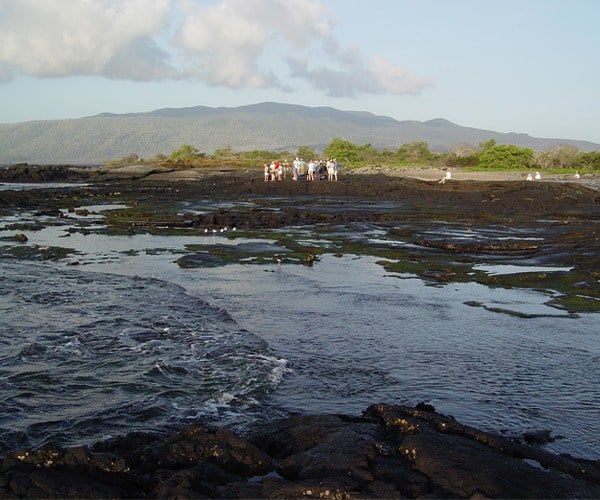 The rich waters, fed by three major ocean currents, attract life from all over the Pacific. They are home to the world’s largest concentration of sharks and some of the most unique migrating marine life throughout the entire planet, including a large number of pregnant whale sharks. From sea turtles and marine iguanas to whales, sharks and manta rays, the Galapagos Marine Reserve makes up one of the most significant marine ecosystems on the planet.
Shore zone
Some of the most outstanding adaptations can be seen in the plant and animal life that have found a way to survive in the archipelago’s salt-ridden shore zone. Marine Iguanas and Galapagos Penguins are an example of a few Galapagos species that have developed stunning adaptations in this salty ecosystem, as have several species of mangrove, with some of these filtering up to 97% of the salt from the water where they grow.
The rich waters, fed by three major ocean currents, attract life from all over the Pacific. They are home to the world’s largest concentration of sharks and some of the most unique migrating marine life throughout the entire planet, including a large number of pregnant whale sharks. From sea turtles and marine iguanas to whales, sharks and manta rays, the Galapagos Marine Reserve makes up one of the most significant marine ecosystems on the planet.
Shore zone
Some of the most outstanding adaptations can be seen in the plant and animal life that have found a way to survive in the archipelago’s salt-ridden shore zone. Marine Iguanas and Galapagos Penguins are an example of a few Galapagos species that have developed stunning adaptations in this salty ecosystem, as have several species of mangrove, with some of these filtering up to 97% of the salt from the water where they grow.
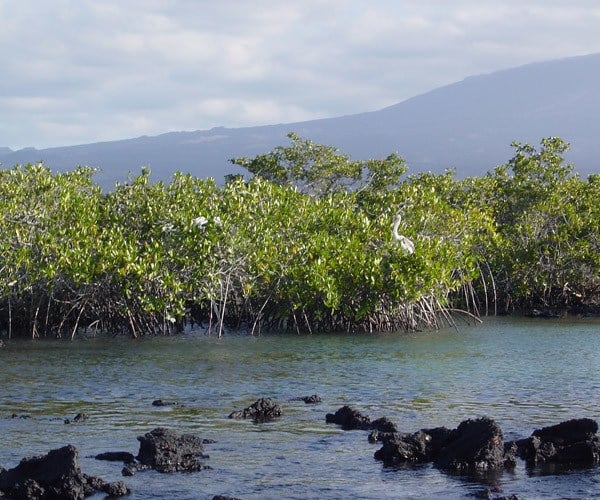 The briny lagoons, such as those found along the shores of Santa Cruz and Rabida islands also host further marvels for visitors, attracting a wide range of marine birds such as the Galapagos Flamingo. Tourists are treated to a range of pristine beaches, from floury white sand to rocky, brown beaches lined by picturesque cliffs.
Arid zone
The most prevalent habitat zone in the archipelago is the arid zone, which is found on all of the main islands and is also home to some of the most famous Galapagos creatures, including Darwin Finches and land iguanas. Cacti, shrubs and deciduous trees dominate this ecosystem, among which Darwin finches may be found pecking around the ground while saddleback tortoises ramble over the rocky soil. Palo Santo, burned for its unique smell, is one of the more well-known plants that grows this zone.
The briny lagoons, such as those found along the shores of Santa Cruz and Rabida islands also host further marvels for visitors, attracting a wide range of marine birds such as the Galapagos Flamingo. Tourists are treated to a range of pristine beaches, from floury white sand to rocky, brown beaches lined by picturesque cliffs.
Arid zone
The most prevalent habitat zone in the archipelago is the arid zone, which is found on all of the main islands and is also home to some of the most famous Galapagos creatures, including Darwin Finches and land iguanas. Cacti, shrubs and deciduous trees dominate this ecosystem, among which Darwin finches may be found pecking around the ground while saddleback tortoises ramble over the rocky soil. Palo Santo, burned for its unique smell, is one of the more well-known plants that grows this zone.
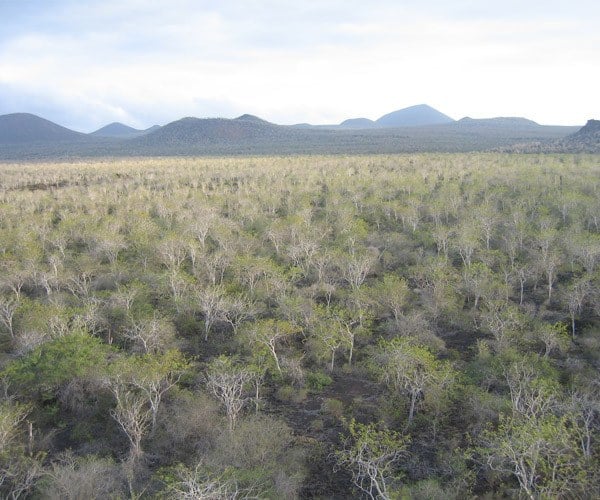 Life here must learn to survive with very little fresh water, so a lot of it has developed splendid adaptations to counteract this scarcity. The Palo Verde plant is actually able to shut off its metabolic system to more efficiently conserve water and energy during dry bouts. Visitors are further attracted to this area due to the large number of land birds and, particularly during nesting season, many marine birds such as blue-footed boobies and storm petrels that use this zone as a nesting site.
Transition zone
Moving to a slightly higher altitude between the arid zone and humid zone lies another unique ecosystem: the transition zone. This zone is home to various trees and shrubs from the arid zone, as well as lichens, perennial herbs and other plants that grow in the humid zone. The soil found in this habitat zone is slightly deeper than that found in the arid zone, and annual rainfall is also higher here, making it a hospitable place for a wider range of plant species.
Life here must learn to survive with very little fresh water, so a lot of it has developed splendid adaptations to counteract this scarcity. The Palo Verde plant is actually able to shut off its metabolic system to more efficiently conserve water and energy during dry bouts. Visitors are further attracted to this area due to the large number of land birds and, particularly during nesting season, many marine birds such as blue-footed boobies and storm petrels that use this zone as a nesting site.
Transition zone
Moving to a slightly higher altitude between the arid zone and humid zone lies another unique ecosystem: the transition zone. This zone is home to various trees and shrubs from the arid zone, as well as lichens, perennial herbs and other plants that grow in the humid zone. The soil found in this habitat zone is slightly deeper than that found in the arid zone, and annual rainfall is also higher here, making it a hospitable place for a wider range of plant species.
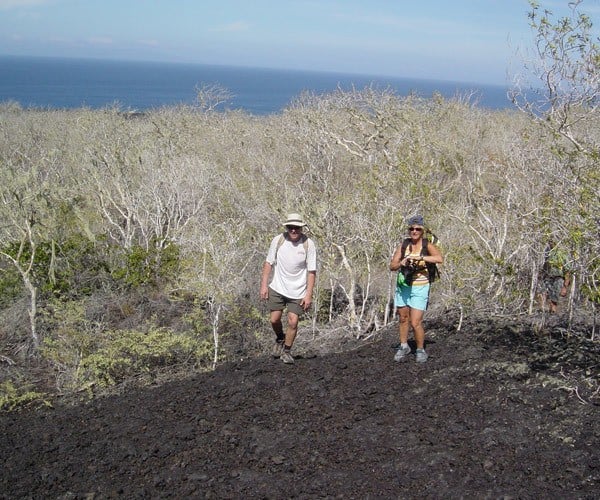 In fact, most agricultural activities occur in this zone, and the largest number of land birds are also found here. However, this zone is best known for being the popular hangout for the Galapagos giant tortoises, which have made this place their home.
Humid zone
The highest areas of the islands, reaching more than 300 feet (91 metres) above sea level, rise high enough to break the cloud cover, forcing moisture downwards to feed a rich, green ecosystem known as the humid zone. This is the wettest, highest and rarest zone in the Galapagos Islands, appearing only on a select few islands, including San Cristobal and Santa Cruz.
In fact, most agricultural activities occur in this zone, and the largest number of land birds are also found here. However, this zone is best known for being the popular hangout for the Galapagos giant tortoises, which have made this place their home.
Humid zone
The highest areas of the islands, reaching more than 300 feet (91 metres) above sea level, rise high enough to break the cloud cover, forcing moisture downwards to feed a rich, green ecosystem known as the humid zone. This is the wettest, highest and rarest zone in the Galapagos Islands, appearing only on a select few islands, including San Cristobal and Santa Cruz.
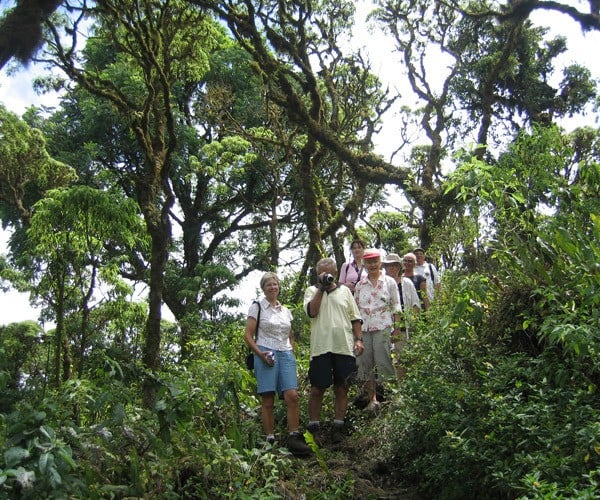 This zone varies greatly in altitude, starting at 300 feet (91 metres) above sea level and extending all the way to 900+ feet (270+ metres). As the islands creep slowly upwards, their vegetation also changes, dividing the zone into a series of three “mini” habitat zones: Scalesia, Miconia and Pampa. Tourists are often amazed by the stunning variety of orchids, Scalesia forests and ferns found in this zone, with the latter plants growing up to 9 feet (nearly 3 metres) in height!
Adrián Peñafiel is Corporate Commercial Officer at Metropolitan Touring. Metropolitan Touring shares the wonders of South America with the world’s explorers through memorable experiences in unique cultures and natural environments.
If you would like to be a guest blogger on A Luxury Travel Blog in order to raise your profile, please contact us.
This zone varies greatly in altitude, starting at 300 feet (91 metres) above sea level and extending all the way to 900+ feet (270+ metres). As the islands creep slowly upwards, their vegetation also changes, dividing the zone into a series of three “mini” habitat zones: Scalesia, Miconia and Pampa. Tourists are often amazed by the stunning variety of orchids, Scalesia forests and ferns found in this zone, with the latter plants growing up to 9 feet (nearly 3 metres) in height!
Adrián Peñafiel is Corporate Commercial Officer at Metropolitan Touring. Metropolitan Touring shares the wonders of South America with the world’s explorers through memorable experiences in unique cultures and natural environments.
If you would like to be a guest blogger on A Luxury Travel Blog in order to raise your profile, please contact us.Did you enjoy this article?
Receive similar content direct to your inbox.


Very much looking forward to visiting here in November next year with Silversea